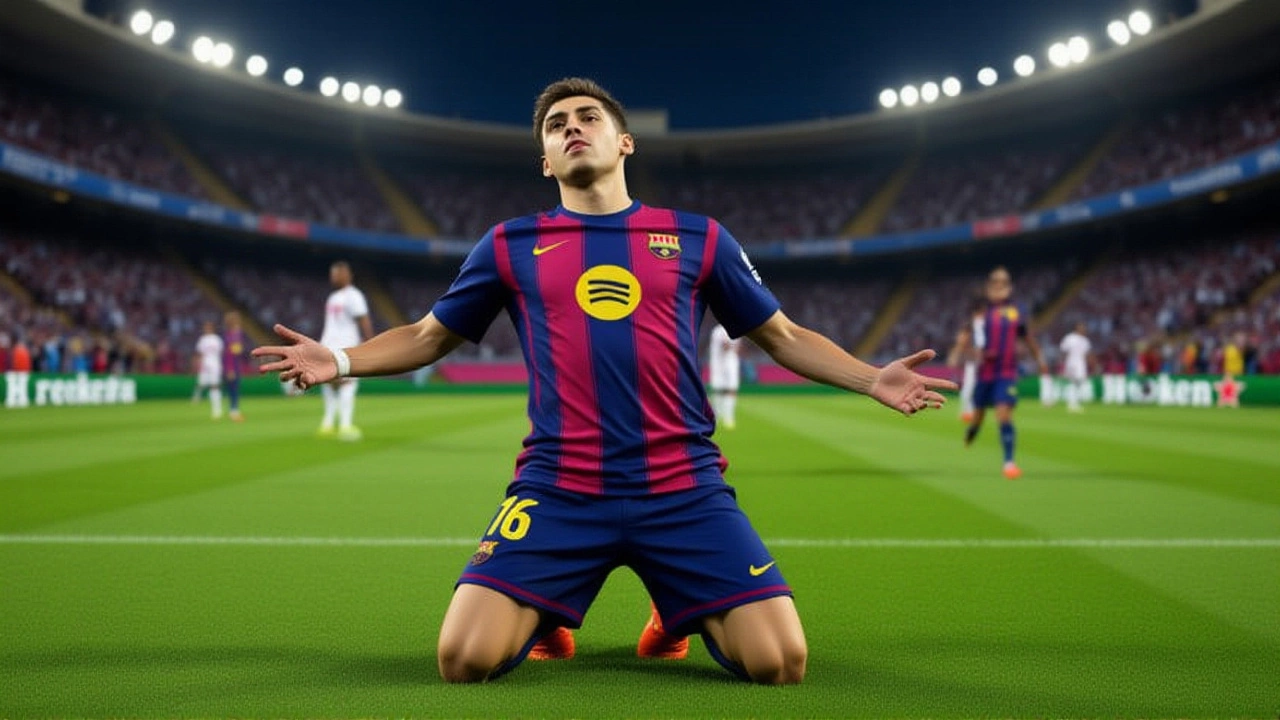When UEFA rolled out the revamped UEFA Women’s Champions League 2025‑26Ullevaal Stadion, Oslo, Norway on July 30, clubs discovered they were in for a very different competition. FC Barcelona seized the early advantage, sitting atop the table with six points after two games, while Real Madrid and a handful of other powerhouses shadowed closely behind. The shift matters because the new single‑league format promises more drama every match day and a clearer path to the quarter‑finals.
How the New League Phase Works
The traditional four‑team groups are gone. Instead, eighteen clubs compete in a single league table, each playing six opponents – three at home, three away. Opponents are drawn from three seeding pots based on the latest UEFA club coefficients, ensuring every side faces a mix of strong, medium and emerging teams. Points are awarded in the usual way: three for a win, one for a draw, none for a loss.
All fixtures in the final match‑day of the league phase will kick off simultaneously, a move designed to keep the suspense alive until the very last whistle. The top four finishers earn automatic quarter‑final spots; places five through twelve enter a two‑legged play‑off for the remaining four spots. Teams finishing thirteenth to eighteenth are out.
- 18 clubs, 6 matches each in the league phase
- Three seeding pots based on UEFA club coefficients
- Simultaneous final match‑day for dramatic finishes
- Top‑4 straight to quarter‑finals; 5‑12 into play‑offs
- Season ends with the final at Ullevaal Stadion, Oslo (May 22‑24 2026)
Early Standings and Key Performances
After two rounds, the leaderboard looks like a who's‑who of European women’s football. FC Barcelona leads with a spectacular +10 goal difference (11‑1), while Real Madrid matches their point tally but trails on goal margin (+5). VfL Wolfsburg sits third, also on six points, boasting a solid defensive record (1‑6 conceded). Olympique Lyon holds fourth, and Manchester United WFC rounds out the perfect‑record clubs with a tidy +2 goal difference.
Mid‑table action is equally intriguing. Chelsea, a perennial challenger, currently occupies sixth with four points, while Belgium’s Oud‑Heverlee Leuven holds seventh. Bayern Munich, surprisingly, lags in eighth after a 3‑8 defeat that left their goal difference at ‑5. Atletico Madrid and others are still fighting for a foothold.
Qualification Paths and Association Allocation
The revamped tournament still respects UEFA’s dual‑path qualification system. The “Champions path” invites domestic champions from associations ranked seventh or lower, plus the previous season’s runner‑up, delivering four spots after a series of mini‑tournaments and two‑legged ties. The “League path” draws in runners‑up from the top‑fourteen associations and third‑placed sides from the elite leagues, also culminating in a mix of mini‑tournaments and knockout ties.
Based on the 2024 UEFA women’s association coefficients – calculated from performances between 2019‑20 and 2023‑24 – the top five federations (France, Germany, Spain, England, and the Netherlands) receive three entries each. France leads with 78.333 points, followed by Germany (68.999) and Spain (68.166). This allocation ensures that the continent’s strongest leagues are well‑represented while still opening doors for emerging nations.

Reactions from Clubs and Officials
“It’s a bold step forward,” said Aleksander Čeferin, UEFA President in a post‑match briefing. “The league phase gives every match weight and brings fans closer to the action.”
Barcelona’s coach, coming off a 5‑0 demolition of a fellow Spanish side, praised the format for rewarding attacking play. “We’ve always believed in an offensive philosophy. Knowing that goal difference can be decisive pushes us to keep the pressure on every opponent,” she said.
Conversely, some smaller clubs voiced concerns about travel demands. Oud‑Heverlee Leuven’s captain noted, “The distances are greater than in the old group stage, but the chance to compete against top clubs is worth it.”
What This Means for Women’s Football
The new league phase could be a catalyst for growth. More high‑stakes matches mean larger broadcast audiences, better sponsorship prospects, and a stronger case for equal investment alongside the men’s game. Already, viewership numbers for the opening fixtures have surpassed the previous season’s group stage averages by roughly 22%.
Long‑term, the format may inspire domestic leagues to tighten calendars and improve competitiveness, narrowing the gap between traditional powerhouses and up‑and‑coming teams. If the current trajectory holds, the 2025‑26 season could become a benchmark for future editions, with the final in Oslo set to be a showcase of how far women’s club football has come.
Frequently Asked Questions
How are the six league‑phase opponents determined?
Each club is placed in one of three seeding pots based on the latest UEFA club coefficient. During the draw, a team receives one opponent from each pot, guaranteeing a mix of stronger, equal and weaker sides across the six matches.
What happens to teams that finish outside the top twelve?
Teams ranking thirteenth to eighteenth are eliminated from the competition after the league phase. Their European campaign ends, and they return to their domestic schedules.
Why did UEFA introduce the new format?
UEFA wanted a structure that mirrors the men’s Champions League, creating more meaningful matches, higher TV revenues, and greater fan engagement across the continent. The league phase also reduces the chance of dead‑rubber games.
Which associations receive the most spots this season?
France, Germany, Spain, England and the Netherlands each have three clubs in the competition, reflecting their high association coefficients for the 2024 ranking period.
When and where is the final scheduled?
The final will be staged at Ullevaal Stadion in Oslo, Norway, between May 22 and May 24 2026. The exact date will be confirmed by UEFA later in the spring.





